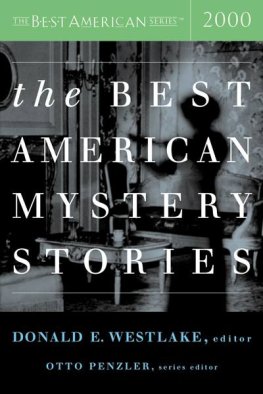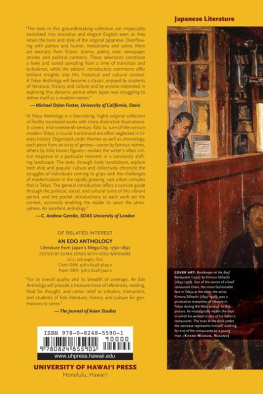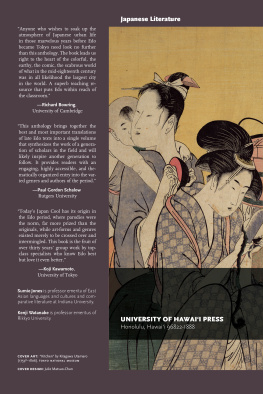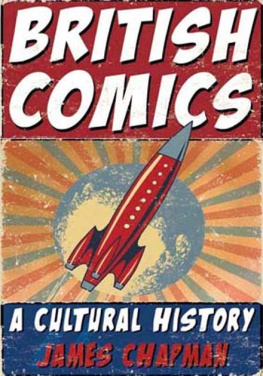The Mighty One
My Life Inside the Nerve Centre
by Steve MacManus
First published 2016 by 2000 AD
an imprint of Rebellion Publishing Ltd,
Riverside House, Osney Mead,
Oxford, OX2 0ES, UK
www.2000adonline.com
UK ISBN: 978 1 78108 475 5
Copyright 2016 Steve MacManus
The right of the author to be identified as the author of this work has been asserted in accordance with the Copyright, Designs and Patents Act 1988.
All rights reserved. No part of this publication may be
reproduced, stored in a retrieval system, or transmitted, in any
form or by any means, electronic, mechanical, photocopying,
recording or otherwise, without the prior permission of the
copyright owners.
2000 AD, Judge Dredd, Starlord Copyright 2016 Rebellion A/S. All rights reserved. Judge Dredd and all related characters, their distinctive likenesses and related elements featured in this publication are trademarks of Rebellion.
Battle, Action, Crisis, Revolver, New Statesmen Copyright Egmont UK Limited 2016.
10 9 8 7 6 5 4 3 2 1
A CIP catalogue record for this book is available from the
British Library.
Designed & typeset by Rebellion Publishing
Printed in Denmark
INTRODUCTION
Heavy weighs the Rosette of Sirius on the head that wears it. He who would be Tharg the Mighty must not only manage and maintain the reserves of Thrill-power that the readers of the Galaxys Greatest Comic demand but he must also keep in line a small army of surly art and story droids, both inside and outside the Nerve Centre. As if that wasnt enough, he occasionally has to dress up in a motorcycle suit and gauntlets, put on a rubber Neanderthal mask, and make sure that the aforementioned Rosette of Sirius remains glued to his forehead throughout a gruelling photo-session.
As someone who was once persuaded to don equally outlandish garb and pretend to be the superheroic editor of another comic, I feel uniquely qualified to declare that Steve MacManus could wear that weighty Rosette like no other Earthlet before or since.
I feel further kinship in that Steve and I both began in comics in the age of Cow Gum, scalpels, typesetting, and editors that wore leather-elbowed sports jackets and smoked pipes whilst leaning against the office fireplace, reminiscing about the Second World War. Not quite as distant as the Neanderthal Age, but close.
In our time at 2000 AD, I was always struck by Steves quietly spoken and affable temperament, although he was no push-over, as I discovered when I arrogantly gave him an either the writer goes or I go ultimatum.
I went.
Over the years, not only with 2000 AD but with Battle, Starlord, Crisis, Revolver, Diceman, the Judge Dredd Megazine and many others, Steve has overwhelmingly proved that he knows how to edit. With this honest and engaging autobiography, hes now proved that he can write too.
Wearing the Rosette of Sirius or not, and modest though he might be, he is unquestionably a Mighty One.
Dave Gibbons
May 2016
1973: COMIC CHARACTERS
HOW DO YOU spell harass? The question was shot at me by the editor of Valiant, one of Britains top adventure comics with weekly sales in excess of 100,000 copies. I was standing in the offices of Fleetway Publications in London and was hoping to be hired in the role of sub-editor in the Juvenile Group. To my left sat the present sub, who was leaving to join a new magazine called Football Star. This titles unique selling point was meant to be its mix of football and pop, but in fact this proved to be its downfall and Football Star closed within six issues of its launch. Also in the room were the art editor and the art assistant, making an editorial team of four. This was the staffing ratio for each of the weekly comics published by Fleetway; the scripts, artwork and lettering being created on a work for hire basis by a host of freelancers based in Britain, Europe and South America. I answered, nervously, spelling harass with one r, only to be corrected by the sub, who was sure that it had two. Fortunately, I was proved right when the editor burst into laughter and mocked his subs poor spelling. The whole room began to chortle (thats what comics folk do) and I was told to come back on Monday to meet the deputy managing editor.
Going home along Fleet Street, aboard a bus bound for Pimlico, I mused on the events that had led me to Fleetway Publications. Leaving school early to spend six months in Sicily, and then scraping three A-Levels at Plymouth Tech, I had returned to London eager to get a job. It was a wage that I wanted, not a university degree, and so I joined the Alfred Marks employment agency. After temping as a linen porter at the Cumberland hotel (changing the live-in maids bedding, but never being invited into a bed, nor even tickled with a feather duster), I next found myself sent to the Swan and Edgar department store in Piccadilly Circus. On arrival, I was dispatched to the basement there to crush used packaging that cascaded with terrifying speed from a chute outlet in the ceiling. Following two weeks of near death by cardboard, I decided to try my luck at journalism, parleying my three A-levels into a meeting with an HR person at IPC Magazines. I must have made an impression of sorts because interviews were arranged for me. After a calamitous ten-minute audience with the publisher of New Scientist I applied for a post on Shoot magazine, armed with the inducement that my silky skills on the football pitch had made me vice-captain of the first team at the tender age of fourteen, only to be told firmly that the position had been filled. As a consolation, I was informed there was a job going on one of the comics if I wanted to apply, which is how I had come to be standing in the Valiant office. My thinking was if I could just get into Fleetway then I could apply internally at a later date for another, more prestigious job. My time on Valiant would be merely a temporary stopover. After all, comics were for kids, werent they?
The Juvenile Group had a boys department, girls department, nursery department and humour department. Each was run by a managing editor, who reported to the group publisher. The man I met on the Monday was named Sid Bicknell. He more or less made it clear to me that had he not been on holiday the previous week I would have had a lot more trouble getting hired. What had happened was that Sids boss, the exotically named Jack Le Grand, had interviewed me in Sids absence and seemed quite happy to hire me. I didnt mind Sids initial ire and managed to impress him by being able to recall my eight-digit bank account number, which he needed for the payroll department. Both Jack and Sid were veterans of World War II, Jack as a glider pilot and Sid on the landing craft on D-Day. Sid used to joke that it was all right for the troops being unloaded on to the beaches, they could hightail it to the nearest cover, but he and his landing crew colleagues had to remain exposed to incoming fire until they could turn about and head back to the mothership. Jack for his part survived the Arnhem debacle even though his glider, like so many others in that operation, crash-landed. They were an unlikely combination: Sid was the stickler for detail with a grasp of grammar that extended to the assertion that lay-byes should actually be called lie-byes, while Jack was the expansive, chain-smoking, larger than life character, always up for a drink after work. After one such drinking session I tried to put him in a Mercedes mini-cab to take him home, but he declined saying, I cant be seen arriving home in an effing wedding car, chum!
And so my career in comics began. I was twenty years old and found myself working on the very comic that I used to read every week in my youth.
Next page




